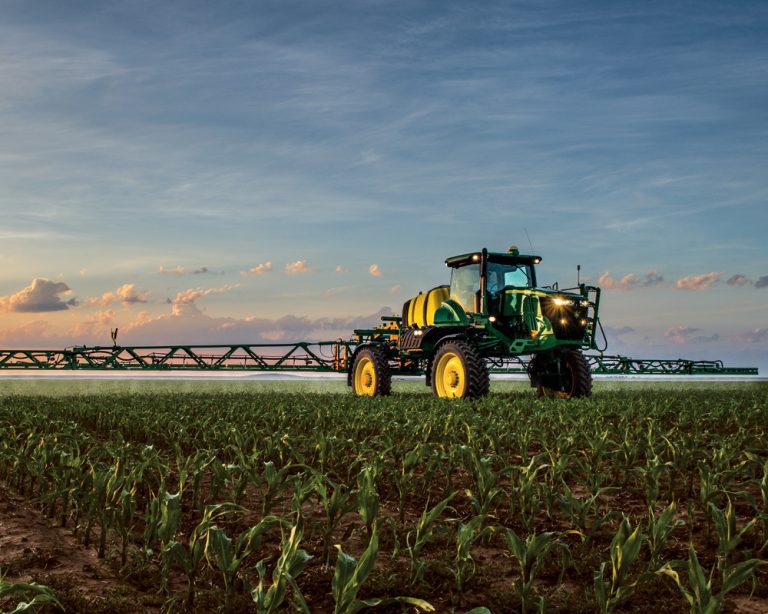Agricultural equipment rental is becoming a smart, strategic move for today’s farmers and agribusinesses. Instead of tying up capital in expensive machinery that may only be needed a few weeks out of the year, many turn to rental solutions that offer flexibility and cost savings. Seasonal needs — like harvesting or planting — can vary widely, and renting allows operations to scale up or down without the burden of ownership. As agricultural technology improves rapidly, renting gives users access to the latest, most efficient models. This is especially beneficial because it eliminates the commitment to long-term purchases that might become outdated. It’s a practical way to stay competitive, maximize productivity and protect the bottom line in a dynamic industry. Why Agricultural Equipment Rental Makes Sense in 2025 Agricultural equipment rental helps reduce capital expenses and allows farming operations to reinvest funds into critical areas like seed, labor or land improvements. Many providers offer access to newer, more efficient models that support better fuel economy, improved precision and greater productivity. Instead of maintaining a full fleet year-round, farmers can rent what they need for specific tasks, whether prepping fields in spring or harvesting in the fall. This on-demand approach maximizes usage and reduces storage and maintenance responsibilities. Most agricultural equipment agreements include service and repairs, so farmers spend less time worrying about breakdowns and can focus more on the work that matters. 1. The Cat® Rental Store The Cat® Rental Store stands out in the agriculture equipment rental space. It offers a wide selection of machinery tailored to farming and land management needs, including earthmoving equipment, aerial lifts and power systems. Backed by the trusted Caterpillar and over 70 leading manufacturers, it delivers dependable performance and quality across every rental. Farmers can scale their operations without overspending or committing to machinery, with short- and long-term agreements available. Each rental includes maintenance and service support, which helps reduce unexpected downtime and keeps productivity on track. The Cat Rental Store also stays ahead by continuously updating its fleet with the latest models and technology. This proactive approach makes it easier for agricultural businesses to work smarter and more efficiently. Its digital tools — including a customer portal and mobile app — simplify transaction management, equipment tracking and access to expert support. 2. Titan Machinery Titan Machinery delivers reliable agricultural equipment rental solutions with a strong focus on performance, flexibility and farm-specific expertise. Its wide-ranging inventory includes tractors, combines, sprayers and tillage equipment — covering planting to harvest. With short- and long-term agreements available, farmers can match the machinery to their seasonal needs without overspending on ownership. Each rental comes with maintenance and service support, reducing the risk of downtime and keeping operations on schedule. As a company specializing in agricultural machinery, Titan offers knowledgeable staff who understand the day-to-day realities of farming and provide practical, tailored recommendations. The fleet is regularly updated with the latest models and precision technology, which ensures customers can work efficiently and stay competitive. 3. Landmark Equipment Rentals Landmark Equipment Rentals offers practical solutions designed to meet the real-world needs of farmers and rural businesses. Its fleet includes a wide range of heavy machinery, trailers and tow-behind equipment ideal for transportation and field operations. To help maximize productivity, Landmark also provides various attachments that boost versatility across different tasks. With flexible daily, weekly or biweekly terms, clients can match rental periods to their specific project timelines without overspending. The company maintains a well-rounded inventory to ensure availability and convenience, and it offers reliable delivery services to get the machinery where and when it is needed. Landmark is backed by a helpful team ready to answer questions and recommend the right tools for the job, making the experience smooth and tailored to the pace of modern agriculture. 4. Sunbelt Rentals Sunbelt Rentals is a reliable choice for agriculture equipment rental because it offers fast delivery, flexible terms and an extensive inventory that supports routine and urgent farm operations. With over 1,200 locations and 14,000 product types, Sunbelt has the scale and variety to serve farmers alongside industries like government, health care and data center maintenance. The company is known for dependable equipment and knowledgeable staff, providing daily, weekly and monthly options to fit the unique demands of each project or season. Its 24/7 customer support ensures help is always available. Meanwhile, time-saving features like invoice management and streamlined delivery keep things running smoothly. Farmers can also use Sunbelt’s mobile app, which allows users to access track rentals and set up real-time notifications. 5. BigRentz BigRentz simplifies agriculture equipment rental by giving farmers and agribusinesses easy access to various machinery, including aerial lifts, earthmoving equipment and material handlers. With a massive network of over 6,000 providers and 14,000 yards across the U.S., BigRents makes it possible to find the right machinery almost anywhere. Rental options are available on a daily, weekly or monthly basis, which makes it easy to align with seasonal work and short-term projects. Its user-friendly online platform allows customers to browse and book equipment in just a few clicks, saving time and reducing hassle. With dedicated customer support and advanced rental management tools, BigRents ensures a smooth, efficient experience — from order to drop-off. Features like real-time tracking and digital dashboards give users greater control and visibility. These factors make this platform a smart choice for modern farms that need flexibility and reliability. Understanding Rental Agreements and Insurance When entering into a rental agreement, it’s important to understand the fine print before signing. Contracts vary by provider, and having a clear picture of the organization’s responsibilities can help avoid unexpected costs or delays. Insurance is another crucial factor because it protects the business and the equipment in case of accidents or damage. Here are some essential considerations to keep in mind: Why More Farmers Choose Equipment Rentals Agricultural equipment rental is a practical solution for cost-conscious, tech-savvy farmers looking to stay efficient without overspending. A trusted provider is ready to meet customer needs, whether they are a






